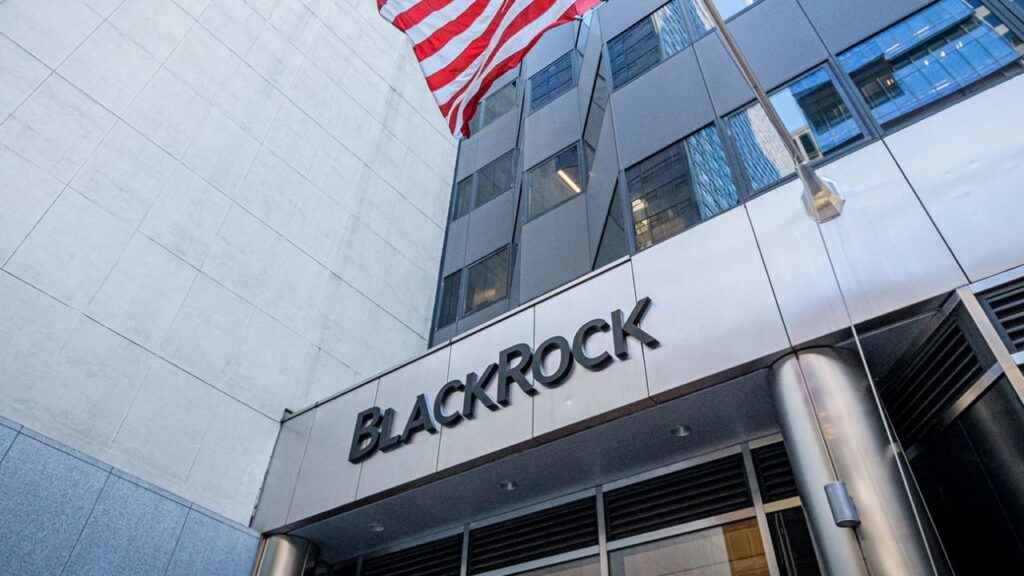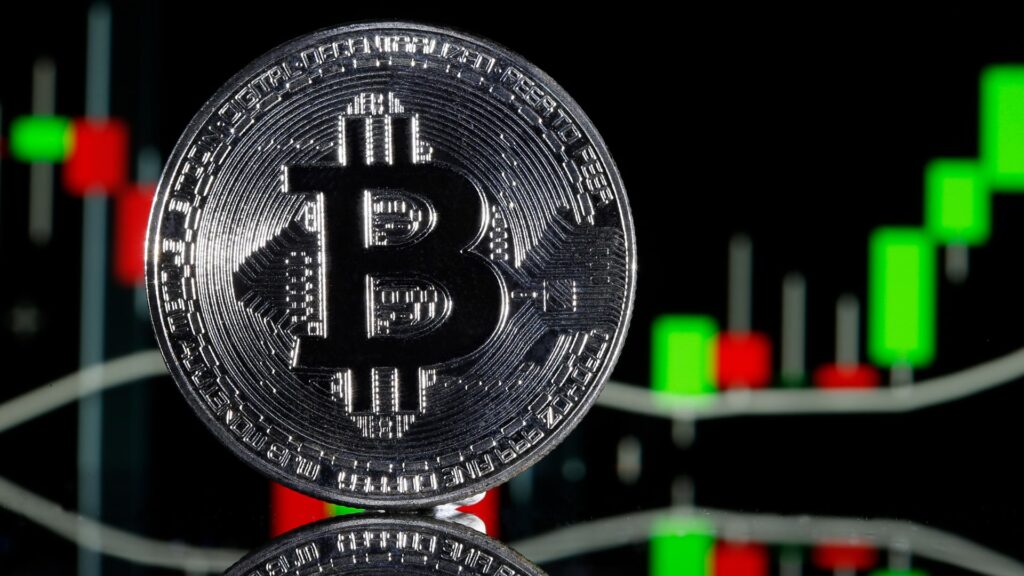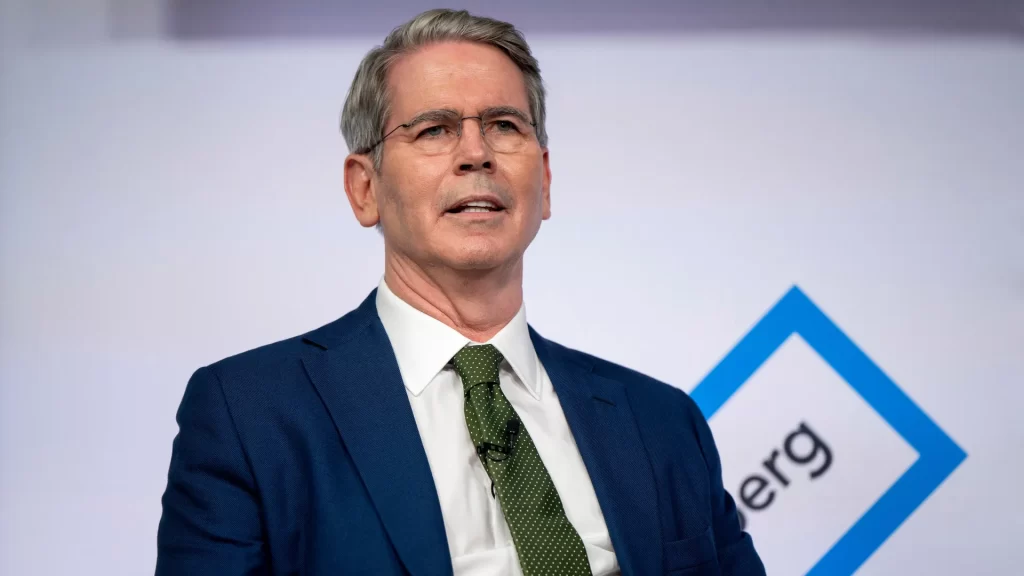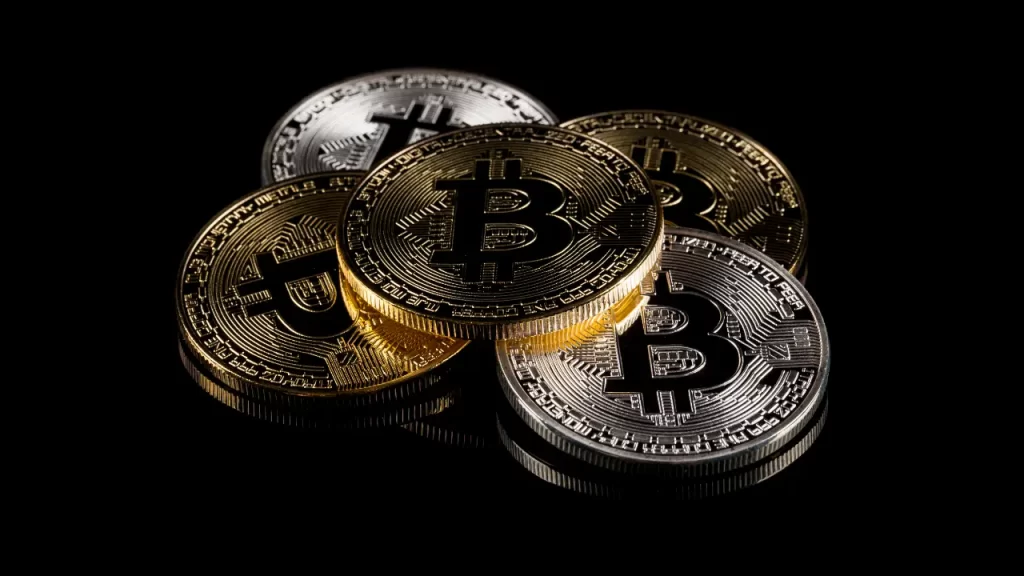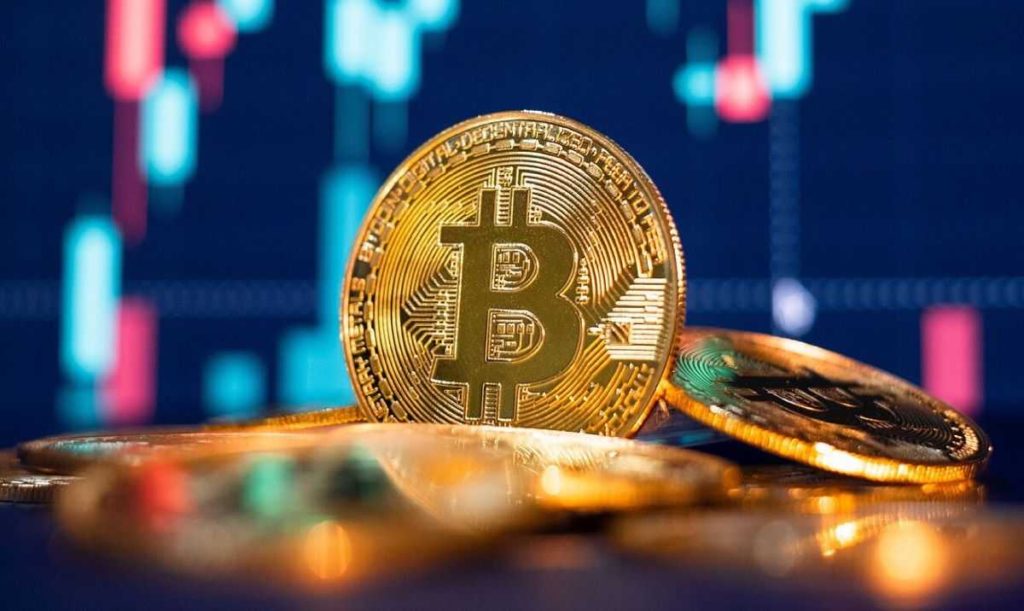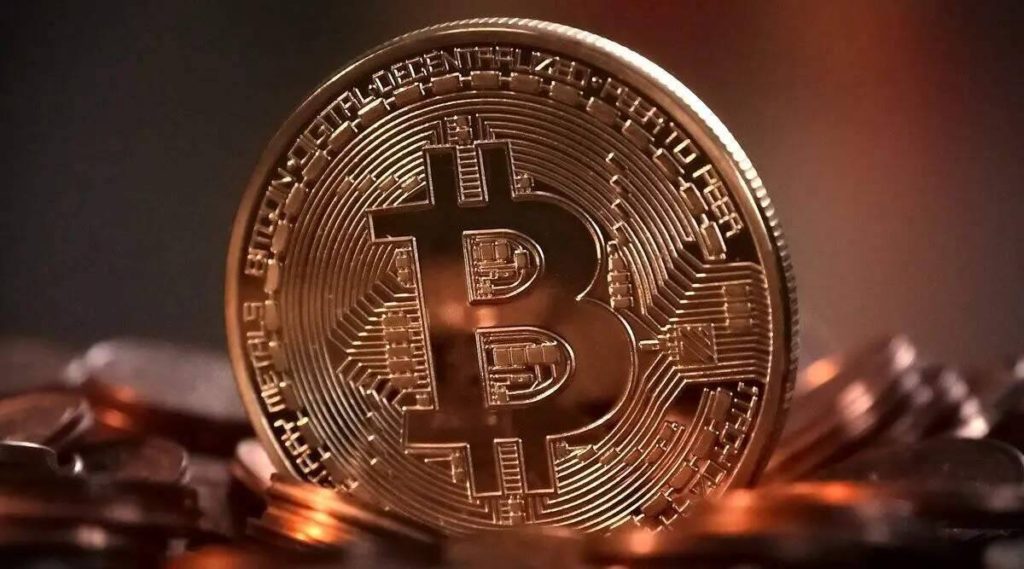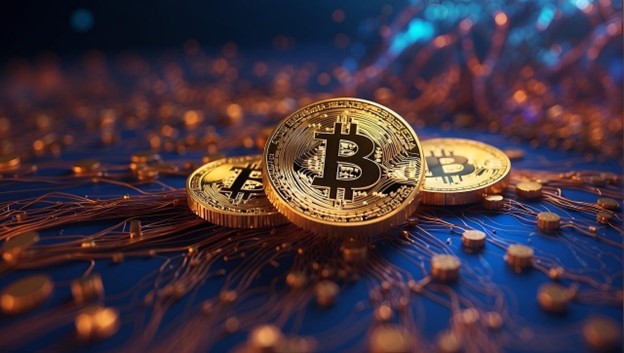BlackRock reported a remarkable surge in digital asset investments during the first quarter of 2025, with $3 billion in net inflows into its digital products. This contributed to the company’s overall $84 billion in total net inflows for the quarter, as revealed in its Q1 earnings report.
ETFs Propel Inflows Amidst Mixed Performance
The firm’s iShares ETF platform continued to be a powerhouse, generating $107 billion in net inflows. However, this figure was offset by significant withdrawals elsewhere, notably a $45.5 billion outflow from institutional index funds. As a result, total net inflows landed lower than ETF performance alone would suggest.
Digital Assets Experience Explosive Growth
BlackRock’s digital asset holdings have skyrocketed over the past year. At the end of Q1 2025, the firm managed more than $50 billion in digital assets—an increase of 187% compared to $17.5 billion the previous year. This growth far outpaced that of other asset classes such as equities, which rose by just 8% year-on-year to $5.7 trillion.
Despite the massive inflows, the digital asset segment experienced some turbulence. The broader crypto market’s volatility led to a $8 billion drop in asset value during the quarter, underlining the inherent risks in the sector.
Modest Slice of a Massive Portfolio
Digital assets still account for a small fraction—just 1%—of BlackRock’s massive $11.6 trillion assets under management (AUM) as of March 31. The $3 billion in net inflows into digital offerings represented only 2.8% of total ETF inflows, highlighting the segment’s niche status.
For context, private market investments saw more than triple the inflows, pulling in $9.3 billion in Q1 alone.
Revenues Remain Minor Despite Growth
Revenue from digital asset-related advisory and administration fees reached $34 million in Q1, which was less than 1% of BlackRock’s $4.1 billion in long-term revenue. While the earnings align with the segment’s AUM share, they also reflect the low-fee structure typical of crypto investment vehicles.
A prime example is the iShares Bitcoin Trust (IBIT), BlackRock’s flagship Bitcoin ETF launched in early 2024. It charges a competitive 0.25% fee after waivers, significantly lower than many traditional financial products.
Market Challenges Persist
The broader environment for digital assets remains uncertain. U.S.-listed spot Bitcoin ETFs have now recorded six consecutive days of net outflows, with $149 million withdrawn in the latest session. Fidelity’s FBTC and Grayscale’s GBTC led the retreat.
Investors appear to be shifting toward safer havens such as gold and cash, driven by rising tensions in U.S.-China trade relations and ongoing policy volatility in Washington.
Bitcoin experienced a sharp surge today, jumping 8% to reach $82,000, following a dramatic policy shift from former President Donald Trump regarding international tariffs. The news set off a wave of bullish sentiment across global financial markets, lifting both equities and cryptocurrencies.
A Bold Trade Move From Trump
Trump’s message, posted on his social media platform Truth Social, revealed a two-pronged approach to trade tariffs. While announcing a pause on tariffs for most countries, Trump simultaneously hit China with a major increase in import duties.
“Based on the lack of respect that China has shown to the world’s markets,” Trump stated, “I am hereby raising the tariff charged to China by the United States of America to 125%, effective immediately.” Alongside this aggressive move, he introduced a 90-day tariff reprieve for all other nations, during which a reduced 10% reciprocal tariff would be enforced.
Financial Markets Respond With a Rally
The announcement acted as a powerful catalyst across financial markets. U.S. stocks experienced a dramatic upswing, reflecting investor optimism about the potential easing of global trade tensions—excluding China. The S&P 500 saw a 9% jump, and the tech-heavy Nasdaq surged by 10%.
Among individual stocks, Tesla led the charge with a 14% gain. Nvidia followed with a 12% increase, while Apple rose by 11%. Other major players like Microsoft, Meta, and Amazon all enjoyed 8% gains, with Google climbing 6%.
White House Voices Back Trump’s Plan
Howard Lutnick, the U.S. Secretary of Commerce, confirmed he was present when the statement was drafted. Sharing his thoughts on X, Lutnick noted, “Scott Bessent and I sat with the President while he wrote one of the most extraordinary Truth posts of his Presidency. The world is ready to work with President Trump to fix global trade, and China has chosen the opposite direction.”
Meanwhile, Treasury Secretary Scott Bessent took a firm tone in a White House press briefing. He cautioned other nations against retaliating and encouraged them to engage in constructive dialogue with the U.S. “Any country willing to negotiate with the United States will be heard and potentially rewarded,” he said.
Strategic Play or Political Theater?
This latest development appears to be a calculated political and economic move, designed to isolate China while warming ties with the rest of the world. The timing and tone of the announcement seem engineered to both appeal to Trump’s base and provoke a global reorientation of trade policies.
Markets are clearly betting on this gamble paying off. With major indices and digital assets rallying in response, investors appear confident that Trump’s aggressive move won’t spark an all-out trade war—at least not with anyone except China.
Bitcoin plunged below the $77,000 mark today after a bold new trade move by US President Donald Trump rattled global financial markets. The sudden announcement of a steep 104% tariff on Chinese imports has deepened fears of economic instability and caused widespread volatility across assets.
Markets React With Whiplash Volatility
Trump’s tariff declaration triggered a rollercoaster day for Wall Street. Initially, investors cheered, and markets surged—both the S&P 500 and Nasdaq recorded impressive intraday gains of approximately 4%. But that optimism didn’t last. By the end of the day, those gains were almost entirely wiped out.
Bitcoin mirrored the stock market’s mood swings. The cryptocurrency briefly climbed above the $80,000 threshold in the immediate aftermath of the news but soon sank below $77,000 as the full impact of the trade escalation began to sink in.
International Outreach Sparks Fleeting Optimism
In the days leading up to the tariff announcement, Trump reached out to US allies including South Korea and Japan. His administration claimed nearly 70 nations had expressed interest in new trade agreements. Trump called the diplomatic efforts a “beautiful and efficient” process.
Despite these talks, the US government confirmed the aggressive 104% tariff plan would move forward. The tariffs will officially take effect at 12:00 AM on April 9, cementing what could be a long and painful chapter in US-China trade relations.
China Vows Resistance and Escalation
China wasted no time issuing a fiery response. In a strongly worded statement, Chinese officials said they would “fight to the end” and denounced Trump’s plan as “US blackmail.” The chances of a negotiated settlement appear slim, with both countries digging in their heels.
Economic Concerns Deepen
The return of trade tensions has reignited fears of a looming US economic slowdown. Goldman Sachs recently raised the odds of a US recession to 45%, citing increased uncertainty and tightening financial conditions. JPMorgan also weighed in, predicting that the Federal Reserve will begin cutting interest rates starting June 2025. They anticipate a rate cut at each meeting through January, eventually bringing the policy rate’s upper bound to 3%.
Investment Shifts Reflect Caution
At a recent financial forum covered by Bloomberg, Loomis Sayles portfolio manager David Rolley described tariffs as “the only tax they can hike.” Meanwhile, fellow strategist Pramila Agrawal estimated the recession probability at 60%. Andrea Dicenso, another analyst from the same firm, said investors were already redirecting funds toward European and Latin American markets, which she characterized as safer and more stable than the US at this point.
As the April 9 tariff implementation date looms, traders, businesses, and investors are bracing for further market shocks and global ripple effects.
Federal agencies have been ordered to disclose their Bitcoin and digital asset holdings by Monday, following a recent executive move by President Trump aimed at creating a Strategic Bitcoin Reserve and a digital asset management infrastructure.
Trump’s Executive Order Ushers in a New Crypto Era for the U.S. Government
The requirement stems from an executive order signed by President Trump on March 6, which was detailed in a formal presidential document dated March 11. This mandate gives all federal departments 30 days to report their crypto asset holdings directly to Treasury Secretary Scott Bessent. A White House official confirmed the report deadline with journalist Eleanor Terrett.
This move marks a significant step in formalizing the U.S. government’s involvement in digital assets, but it remains unclear whether these disclosures will be made public. The executive order does not compel transparency to the general public, leaving the scope of future revelations uncertain.
Two New Government Offices to Manage Crypto Assets
As part of the order, the Treasury Department will manage two newly created offices that focus on digital assets. The Strategic Bitcoin Reserve, referred to by insiders as a “digital Fort Knox,” will store Bitcoin seized through criminal or civil forfeitures. This reserve is designed for long-term holding and is not intended to be actively traded or liquidated.
A second arm, the Digital Asset Stockpile, will operate similarly by acquiring assets through forfeitures. However, the Treasury is allowed to manage and liquidate these assets more flexibly. This active management differentiates it from the more conservative Bitcoin reserve.
President Trump has also previously mentioned Ethereum, XRP, Solana, and Cardano in the context of this stockpile. According to White House crypto tsar David Sacks and top advisor Bo Hines, these mentions reflect Trump’s awareness of their significance due to their market caps, rather than any indication of planned acquisitions.
Current Holdings: Bitcoin and Beyond
According to blockchain analytics platform Arkham Intelligence, the U.S. government currently holds 198,012 BTC in a single wallet—an amount worth over $15 billion. Alongside this large Bitcoin holding, the government also possesses other digital assets including ETH, WBTC, BNB, and TRX. The estimated value of these altcoin holdings stands at around $380 million.
David Sacks shared additional historical context, revealing that the government has previously held approximately 400,000 Bitcoin acquired over the last ten years through various forfeitures. Of that amount, around 195,000 BTC were sold, yielding about $366 million in proceeds.
Bitcoin’s Price Faces Pressure Amid Economic Concerns
Since the formation of the Strategic Bitcoin Reserve, Bitcoin’s price has seen a sharp decline. After reaching a high of over $94,000, the flagship cryptocurrency has dropped by roughly 17%, currently sitting at $77,800 according to CoinGecko. This downturn aligns with growing investor anxiety around recession risks and ongoing trade war developments.
Bitcoin is gaining renewed prominence as a financial safe haven, holding its ground while traditional equities face their largest collapse in history. Following President Trump’s announcement of sweeping import tariffs, U.S. markets saw a record-breaking $5 trillion wipeout.
Massive Stock Market Turmoil
The S&P 500 experienced an unprecedented two-day loss of $5.4 trillion, exceeding the $3.3 trillion plunge during March 2020’s COVID-induced selloff. Trump’s April 2 announcement aimed to curb a $1.2 trillion trade deficit by targeting foreign imports—a move that spooked investors and sent stocks tumbling.
Bitcoin’s Maturity Shines Through
In stark contrast to traditional markets, Bitcoin’s reaction was muted. The cryptocurrency dipped just 3.7%, briefly touching $82,000 before climbing to $83,600. This relative calm signals that Bitcoin may be maturing into a more stable macro asset, according to Marcin Kazmierczak, COO of RedStone.
“What we’re potentially witnessing is an evolution in Bitcoin’s market positioning,” Kazmierczak noted, pointing to a possible shift in investor sentiment away from risk asset behavior.
Decoupling From Traditional Assets
Bitcoin’s structural resilience amid high volatility drew praise from analysts. Iliya Kalchev of Nexo commented, “BTC shows its worth, staying above its $82,000 key support level… structural demand remains intact.”
James Wo, CEO of DFG, acknowledged that while Bitcoin ETFs have increased institutional exposure and macro sensitivity, the current market dynamics may elevate Bitcoin’s “digital gold” status.
“If Bitcoin remains resilient, its decentralized nature and hard-capped supply could reinforce its role as a reliable store of value,” Wo said.
Bullish Outlook for 2025
Looking ahead, optimism continues to build. Jamie Coutts, chief crypto analyst at Real Vision, forecasts Bitcoin could climb above $132,000 by the end of 2025. He attributes this projection to increasing money supply levels that historically correlate with higher BTC prices.
With traditional markets faltering and governments likely to respond with more money printing, Bitcoin’s fixed-supply advantage could become even more appealing to investors seeking a hedge against monetary debasement.
A 40% chance of a recession looms over the U.S. in 2025, with trade war fears and ongoing macroeconomic uncertainty fueling the risk. According to Nic Puckrin, the founder of Coin Bureau, while a recession isn’t certain, the economic environment could harm risk-on assets like cryptocurrencies. Puckrin remarked:
“Trump and his advisors have said they have not completely dismissed the recession, which means it is definitely possible, but right now, I would not say it is probable, but the odds have climbed a lot.”
Impact of Trump Administration’s Economic Policies
Puckrin also explained that while Trump is not intentionally pushing for a recession, policies such as job cuts and budget balancing could trigger an economic slowdown. This uncertainty has contributed to a decline in the US Dollar Index (DXY), as investors look to European markets for better opportunities.
Crypto Markets Struggle Amid Trade War
The U.S. trade war, particularly with China, has already impacted cryptocurrency markets, with Bitcoin dropping significantly. Fears of prolonged tariffs have caused market sentiment to shift into extreme fear, though some analysts believe there could be a potential recovery if the situation stabilizes.
Signs of Potential Recovery
Markus Thielen of 10x Research suggests that Bitcoin may have reached a price bottom in March 2025, with the potential for a reversal if Trump softens his stance on tariffs.
US President Donald Trump is reportedly planning to meet El Salvador’s President Nayib Bukele at the White House next month. Bloomberg sources indicate that the two leaders, both known for their pro-Bitcoin stance, have maintained communication since Trump’s inauguration.
The relationship between the two was solidified early on, with Trump and Bukele discussing cooperation on tackling illegal immigration and transnational gangs, including Tren de Aragua, shortly after Trump took office. If the meeting takes place, Bukele will become the first leader from the Western Hemisphere to receive an official invitation under Trump’s presidency.
Focus on Bitcoin and Technology
Bukele has been actively engaged in discussions related to Bitcoin and technological investments. In February, he met with Michael Saylor, Strategy’s Executive Chairman, to discuss Bitcoin-related matters. Additionally, he hosted venture capitalists Ben Horowitz and Marc Andreessen in El Salvador, with talks centered around artificial intelligence and technology investments aimed at positioning El Salvador as a key regional tech hub.
Bitcoin’s Role in the Meeting
Speculation is growing that Bitcoin could be a central topic in the upcoming meeting. Bukele has been vocal about the potential impact of Trump’s presidency on the cryptocurrency market. In a January press conference, he shared his optimism about Bitcoin’s future under Trump’s leadership.
“I believe, personally, that this year, and the years ahead, will be very important for Bitcoin and for the entire ecosystem, especially with Trump’s assumption of power,” Bukele said.
El Salvador made history in 2021 by becoming the first nation to adopt Bitcoin as legal tender alongside the US dollar. The country currently holds 6,129 BTC in reserves, valued at approximately $514 million, according to Arkham data.
Trump’s administration has already taken steps towards integrating Bitcoin into the US financial landscape. On March 6, he signed an executive order establishing a US Strategic Bitcoin Reserve, funded through federal-owned Bitcoin. The administration aims to expand the nation’s Bitcoin holdings without additional taxpayer expenses.
As the details of the White House meeting continue to be finalized, it remains to be seen whether cryptocurrency policy will take center stage in the discussions between Trump and Bukele.
A crypto wallet associated with the US government transferred over $8 million worth of Bitcoin, following an executive order by President Donald Trump to establish a Strategic Bitcoin Reserve. This move has drawn significant attention from the crypto community as authorities continue to manage seized digital assets.
The transaction, identified by blockchain analytics firm Arkham Intelligence, involved assets previously confiscated from a Binance account linked to Wanpadet Sae-Heng of Thailand. The seized holdings included 97 Bitcoin, along with other digital currencies such as Dogecoin, Ethereum, and Cardano. Sae-Heng was reportedly involved in a large-scale “pig butchering” investment fraud scheme, leading to the confiscation of these assets.
Details of the Bitcoin Movement
The recent transaction split the assets between two different wallet addresses. A small portion, valued at approximately $10 in Bitcoin, was sent to one address, while the bulk of the funds were directed to another. The purpose behind this division remains unclear, leaving analysts speculating about potential government strategies for handling digital assets.
This marks the first major Bitcoin transaction by US authorities since December, when nearly $1.9 billion worth of Bitcoin was moved to Coinbase Prime. The timing of the latest transfer coincides with Trump’s new directive, raising questions about whether it was related to the formation of the Strategic Bitcoin Reserve.
The US Government’s Expanding Bitcoin Holdings
Currently, the US government possesses approximately 198,012 BTC, valued at around $17 billion based on current market prices. This figure reflects substantial past transactions, as officials have regularly seized and sold Bitcoin linked to criminal activities.
Bo Hines, Trump’s top cryptocurrency advisor, stated that the government once held nearly 400,000 Bitcoin but sold almost half for under $1 billion—assets that would now be worth over $17 billion. This past liquidation has sparked criticism, with many arguing that the US missed a significant financial opportunity.
David Sacks, Trump’s AI and crypto czar, echoed these concerns, stating that had the government retained approximately 195,000 Bitcoin seized over the past decade, it could have gained an additional $17 billion in value. This has led to renewed scrutiny over how the US Marshals Service, which oversees asset management, has handled digital currency reserves.
The Strategic Bitcoin Reserve Initiative
Under Trump’s executive order, signed on March 6, all seized Bitcoin will now be funneled into the newly established Strategic Bitcoin Reserve. Unlike previous government sales of digital assets, this reserve aims to maintain Bitcoin as a long-term national asset rather than liquidating holdings for immediate revenue.
The order mandates a full review of federal digital asset holdings within 30 days and grants the Treasury Secretary authority to manage the US Digital Asset Stockpile. Additionally, both the Treasury and Commerce Secretaries have been directed to explore budget-neutral strategies to acquire more Bitcoin, ensuring the reserve expands without additional taxpayer costs.
This policy shift represents a stark contrast to previous US government approaches toward Bitcoin, potentially signaling a move toward deeper integration of digital assets into national financial strategies. As the Strategic Bitcoin Reserve takes shape, further transfers and acquisitions may follow, solidifying the government’s role in the cryptocurrency space.
Bitcoin’s recent rally to $88,500 has reignited enthusiasm among retail traders. However, blockchain analysis firm Santiment warns that social media sentiment could signal the need for caution.
Market Turbulence and Recovery
The cryptocurrency market faced significant turbulence in late February and early March, with Bitcoin plunging to $78,000 twice. Several factors contributed to this decline, including macroeconomic concerns, President Trump’s economic policies, and newly imposed tariffs.
The Federal Reserve’s stance on monetary policy further exacerbated market anxieties. Fears of rising inflation and potential interest rate hikes pushed investors toward safer assets, reducing the appeal of Bitcoin and other cryptocurrencies.
During the same period, gold emerged as a preferred hedge, reaching record highs. The precious metal climbed to $3,057 per ounce in March 2025, following a peak of $2,956 in February. As gold gained traction, Bitcoin suffered from declining investor confidence.
Despite this downturn, Bitcoin staged a strong recovery in the second half of March, climbing back to $88,500. This resurgence shifted market sentiment from fear to mild greed, according to Santiment’s analysis.
Bullish and Bearish Predictions Flood Social Media
With Bitcoin’s rally, optimism has surged across social media platforms. Santiment reports that bullish predictions now dominate discussions, with forecasts ranging between $100,000 and $159,000. Conversely, bearish outlooks suggest prices could drop as low as $10,000, with more conservative estimates landing between $69,000 and $78,000.
However, historical patterns indicate that extreme optimism among retail investors often precedes market corrections. Santiment cautions that when a majority of traders expect Bitcoin to skyrocket, the likelihood of a downturn increases. Conversely, when negativity dominates discussions, markets often experience a rebound.
Warnings Against Overconfidence
Santiment emphasizes the importance of exercising caution during periods of heightened market sentiment. The firm warns that phrases like “to the moon” and “lambo time” flooding social media may indicate an impending price correction.
“When you see ‘crypto is dead’ or ‘Bitcoin is a scam,’ this should be music to your ears,” Santiment noted, reinforcing the idea that pessimism often signals buying opportunities.
At the time of writing, Bitcoin was trading around $87,200, reflecting a 6% gain over the past week, according to CoinGecko data.
Expert Forecasts on Bitcoin’s Future
Arthur Hayes, co-founder of BitMEX, remains optimistic about Bitcoin’s trajectory. He predicts that the cryptocurrency could surpass $110,000, driven by the Federal Reserve’s anticipated shift from quantitative tightening to easing. A looser monetary policy could inject more liquidity into financial markets, benefiting Bitcoin and other risk assets.
Markus Thielen, founder of 10X Research, supports this perspective but remains cautious about the immediate future. While he acknowledges that easing measures and softened tariff policies could help Bitcoin maintain its upward momentum, he believes that a major catalyst for a dramatic price surge is currently lacking.
As Bitcoin continues to navigate macroeconomic uncertainties, traders should remain vigilant and avoid being swayed solely by social media sentiment. While the long-term outlook remains bullish for many analysts, past trends suggest that extreme optimism can often lead to market corrections.
Over 27,740 Bitcoin, valued at approximately $2.4 billion, were withdrawn from exchanges on March 25, marking the highest daily outflow since July 2024. Meanwhile, spot Bitcoin ETFs have continued attracting inflows, signaling renewed institutional interest.
Whale Activity and Market Sentiment
Analysis from Glassnode indicates that a significant portion of the withdrawals came from Bitcoin whales—holders of at least 1,000 BTC. On March 25 alone, these investors moved over 11,574 BTC (worth around $1 billion) off exchanges. This trend suggests accumulation and reduced selling pressure, which is often a bullish indicator for Bitcoin’s price.
Additionally, Arkham Intelligence reported that a “billionaire Bitcoin whale” added 2,400 BTC (worth over $200 million) on March 24. Despite some February sell-offs, this investor now holds over 15,000 BTC, hinting at strategic buying amid price dips.
Spot Bitcoin ETFs See Continuous Inflows
Another bullish sign is the steady inflow into spot Bitcoin ETFs. Since March 14, these funds have recorded eight consecutive days of inflows, totaling nearly $900 million. Market data provider Santiment noted that this is the longest streak of inflows seen in 2025.
Meanwhile, Bitcoin’s price remains in a crucial technical zone. Trading at $88,265, BTC faces resistance at the 20-week exponential moving average (EMA) of $88,682. Analysts highlight the importance of this level, as historical breakouts above the 20-week EMA have preceded major price surges.



